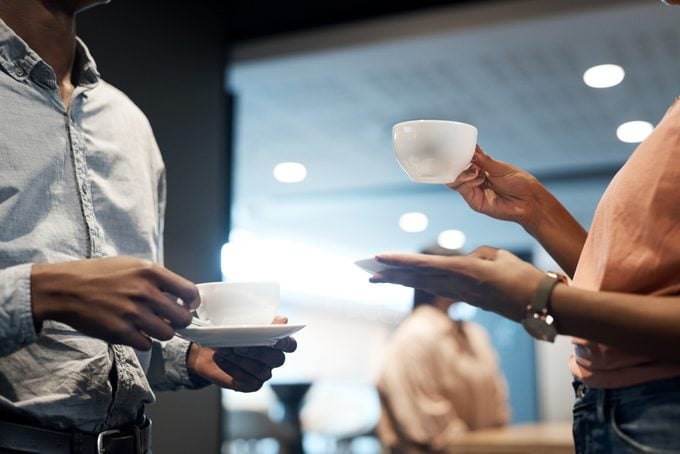What Is High Tea?: Your Guide to 3 Types of Tea Traditions
Updated: Apr. 28, 2024

Find your answer to "What is high tea?" and more with this explainer on the time-honored traditions of English tea.
Our editors and experts handpick every product we feature. We may earn a commission from your purchases.Learn more.
Tea, which has nearly 5,000-year-old Chinese origins, is now enjoyed the world over. But the concepts of afternoon tea and high tea are uniquely British. And because of this, even the most avid tea drinkers from outside the U.K. might be unaware of their differences, traditions and history. Here, we break down high tea, afternoon tea and even elevenses.
Did you know these crazy-amazing health benefits of tea?
On This Page
What Is High Tea?
When you think of the typical tea party with delicate china and dainty bites, you’re not thinking of high tea. High tea, rather, is comparable to a light supper.
History of High Tea
Contrary to popular misconception, the “high” in high tea doesn’t allude to high class. Popularized during the Industrial Revolution, high tea was enjoyed after the workday, between 5 and 7 p.m., by the working class who couldn’t manage the midday break that afternoon tea entails. And because of this, high tea is less formal than afternoon tea.
The “high” in high tea is a nod to the fact that it is enjoyed at a high table—well, higher than those used for afternoon tea, at least. A standard dining table is the typical setting for high tea.
By the way, this geometric cast-iron teapot is an amazing kitchen addition.
What to Eat at High Tea
High tea includes heartier fare than the posh noshes of afternoon tea. Think meat, fish, eggs and bread. And, of course, there’s the obligatory pot of good, strong tea. (Learn how to steep tea properly.)
What Is Afternoon Tea?

Afternoon tea is exactly what people picture when they think of British tea. Finger sandwiches and florals abound!
History of Afternoon Tea
In the early 1800s, the Duchess of Bedford, Anna Maria Russell, invented afternoon tea as a way to bridge the long gap between lunch and dinner. At the time, the latter took place close to 8 p.m. Afternoon tea is served around 4 p.m., halfway between the two meals, and was originally a luxury for the rich and elite; others would’ve been working at this hour. Hence, high tea was the proletariat response to this new trend.
Now, anyone can enjoy afternoon tea—but they usually do so only on holidays or special occasions, oftentimes at tea rooms or hotels. Also referred to as “low tea,” afternoon tea is served in a garden or parlor at comfortable low chairs and tables.
Discover why Brits add milk to their tea.
What to Eat at Afternoon Tea
Tea party recipes are light and also quite regimented. The three courses are served on a tiered tray. The bottom tier is filled with scones, served with clotted cream, jams and lemon curd. The second tier is reserved for tea sandwiches, such as cucumber, egg salad and smoked salmon. The top tier is dessert and to be enjoyed last. Treats often include macarons, tea cakes and petit fours.
What Is Elevenses?

Various countries have their own versions of elevenses, which is taken, as the name would suggest, at 11 a.m. Similar to the morning coffee break in the U.S. and acting as a sort of second breakfast, the English variation of elevenses consists of tea or coffee and a couple biscuits (i.e., American cookies). Like clockwork, partakers step out of their cubicles or offices for a quick break and snack. It’s tradition!




















